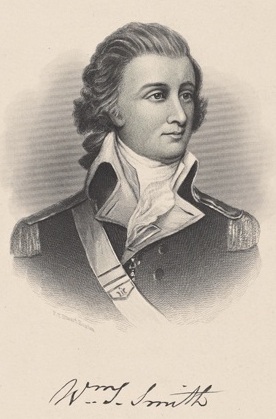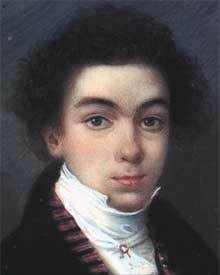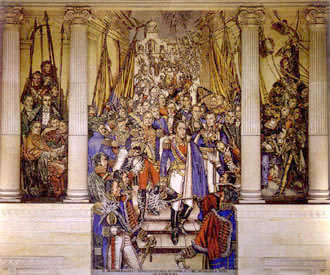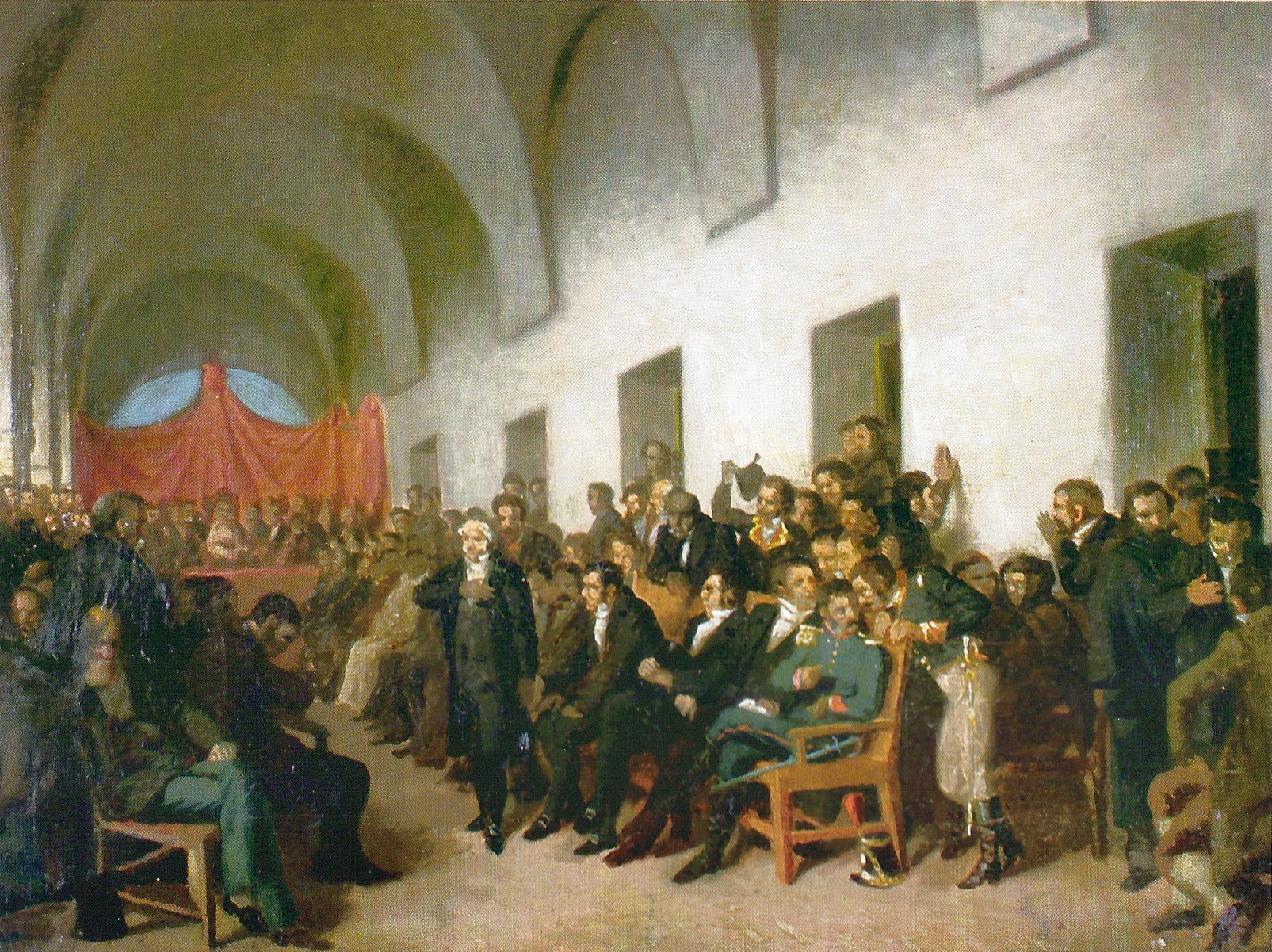|
Currency Of Venezuela
The currency of Venezuela has been in circulation since the end of the 18th century. The present currency unit in Venezuela is the Venezuelan bolívar. Pre-independence currency Peso = 8 Reales (silver) Escudo = 2 Pesos (gold) Venezuela shared the common Spanish-American monetary system, based on the silver peso and the gold escudo, which was used throughout Spanish America. Trade, especially in cacao, brought money to the colony in the late 17th century in the form of coin from the Mexico money supply, which increased significantly after the Compañía Guipuzcoana de Caracas obtained a trade monopoly in 1729, and Spanish and Spanish-American coin became a common form of payment. The prohibition on the circulation of American coin in Spain (May 4, 1754) resulted in coin from the Spanish mints returning to Spain. The Guipuzcoana Company then brought in a large quantity of cobs (''macuquina'') from the Lima, Potosí, and Mexico City mints. This cob coinage remained the coinag ... [...More Info...] [...Related Items...] OR: [Wikipedia] [Google] [Baidu] |
Currency
A currency, "in circulation", from la, currens, -entis, literally meaning "running" or "traversing" is a standardization of money in any form, in use or circulation as a medium of exchange, for example banknotes and coins. A more general definition is that a currency is a ''system of money'' in common use within a specific environment over time, especially for people in a nation state. Under this definition, the British Pound Sterling (£), euros (€), Japanese yen (¥), and U.S. dollars (US$)) are examples of (government-issued) fiat currencies. Currencies may act as stores of value and be traded between nations in foreign exchange markets, which determine the relative values of the different currencies. Currencies in this sense are either chosen by users or decreed by governments, and each type has limited boundaries of acceptance - i.e. legal tender laws may require a particular unit of account for payments to government agencies. Other definitions of the term "curren ... [...More Info...] [...Related Items...] OR: [Wikipedia] [Google] [Baidu] |
Francisco De Miranda
Sebastián Francisco de Miranda y Rodríguez de Espinoza (28 March 1750 – 14 July 1816), commonly known as Francisco de Miranda (), was a Venezuelan military leader and revolutionary. Although his own plans for the independence of the Spanish American colonies failed, he is regarded as a forerunner of Simón Bolívar, who during the Spanish American wars of independence successfully liberated much of South America. He was known as "The First Universal Venezuelan" and "The Great Universal American". Miranda led a romantic and adventurous life in the general political and intellectual climate that emerged from the Age of Enlightenment that influenced all of the Atlantic Revolutions. He participated in three major historical and political movements of his time: the American Revolutionary War, the French Revolution and the Spanish American wars of independence. He described his experiences over this time in his journal, which reached to 63 bound volumes. An idealist, he develope ... [...More Info...] [...Related Items...] OR: [Wikipedia] [Google] [Baidu] |
Andrés Bello
Andrés de Jesús María y José Bello López (; November 29, 1781 – October 15, 1865) was a Venezuelan- Chilean humanist, diplomat, poet, legislator, philosopher, educator and philologist, whose political and literary works constitute an important part of Spanish American culture. Bello is featured on the old 2,000 Venezuelan bolívar and the 20,000 Chilean peso notes. In Caracas, where he was born, Andrés Bello was Simón Bolívar's teacher for a short period of time and participated in the process that led to Venezuelan independence. As a diplomat for the new independent government that he helped establish, he went with Luis López Méndez and Simón Bolívar on their first diplomatic mission to London. He lived in London from 1810 to 1829. In 1829, Bello went with his family to Chile. He was hired by the Chilean government and made great works in the field of law and humanities. In Santiago he held positions as a senator and a professor, as well as directing seve ... [...More Info...] [...Related Items...] OR: [Wikipedia] [Google] [Baidu] |
Simón Bolívar
Simón José Antonio de la Santísima Trinidad Bolívar y Palacios (24 July 1783 – 17 December 1830) was a Venezuelan military and political leader who led what are currently the countries of Colombia, Venezuela, Ecuador, Peru, Panama and Bolivia to independence from the Spanish Empire. He is known colloquially as '' El Libertador'', or the ''Liberator of America''. Simón Bolívar was born in Caracas in the Captaincy General of Venezuela into a wealthy criollo family. Before he turned ten, he lost both parents and lived in several households. Bolívar was educated abroad and lived in Spain, as was common for men of upper-class families in his day. While living in Madrid from 1800 to 1802, he was introduced to Enlightenment philosophy and met his future wife María Teresa Rodríguez del Toro y Alaysa. After returning to Venezuela, in 1803 del Toro contracted yellow fever and died. From 1803 to 1805, Bolívar embarked on a grand tour that ended in Rome, where he swore to end ... [...More Info...] [...Related Items...] OR: [Wikipedia] [Google] [Baidu] |
International Monetary Fund
The International Monetary Fund (IMF) is a major financial agency of the United Nations, and an international financial institution, headquartered in Washington, D.C., consisting of 190 countries. Its stated mission is "working to foster global monetary cooperation, secure financial stability, facilitate international trade, promote high employment and sustainable economic growth, and reduce poverty around the world." Formed in 1944, started on 27 December 1945, at the Bretton Woods Conference primarily by the ideas of Harry Dexter White and John Maynard Keynes, it came into formal existence in 1945 with 29 member countries and the goal of reconstructing the international monetary system. It now plays a central role in the management of balance of payments difficulties and international financial crises. Countries contribute funds to a pool through a quota system from which countries experiencing balance of payments problems can borrow money. , the fund had XDR 477 billion (a ... [...More Info...] [...Related Items...] OR: [Wikipedia] [Google] [Baidu] |
Latin Monetary Union
The Latin Monetary Union (LMU) was a 19th-century system that unified several European currencies into a single currency that could be used in all member states when most national currencies were still made out of gold and silver. It was established in 1865 and disbanded in 1927. Many countries minted coins according to the LMU standard even though they did not formally accede to the LMU treaty. History Preliminary context The LMU adopted the specifications of the French gold franc, which had been introduced by Napoleon I in 1803 and was struck in denominations of 5, 10, 20, 40, 50 and 100 francs, with the 20 franc coin ( of .900 fine gold struck on a planchet) being the most common. In the French system the gold franc was interchangeable with the silver franc based on an exchange ratio of 1:15.5, which was the approximate relative value of the two metals at the time of the law of 1803. Initial treaty By treaty dated 23 December 1865, France, Belgium, Italy, and Switzerland fo ... [...More Info...] [...Related Items...] OR: [Wikipedia] [Google] [Baidu] |
Gran Colombia
Gran Colombia (, "Great Colombia"), or Greater Colombia, officially the Republic of Colombia (Spanish: ''República de Colombia''), was a state that encompassed much of northern South America and part of southern Central America from 1819 to 1831. It included present-day Colombia, mainland Ecuador (i.e. excluding the Galápagos Islands), Panama, and Venezuela, along with parts of northern Peru, northwestern Brazil, and Part of Guyana. The terms Gran Colombia and Greater Colombia are used historiographically to distinguish it from the current Republic of Colombia, which is also the official name of the former state. However, international recognition of the legitimacy of the Gran Colombian state ran afoul of European opposition to the independence of states in the Americas. Austria, France, and Russia only recognized independence in the Americas if the new states accepted monarchs from European dynasties. In addition, Colombia and the international powers disagreed over the exte ... [...More Info...] [...Related Items...] OR: [Wikipedia] [Google] [Baidu] |
History Of Ecuador
The History of Ecuador extends over an 8,000-year period. During this time, a variety of cultures and territories influenced what has become the Republic of Ecuador. The history can be divided into six eras: Pre-Columbian, the Conquest, the Colonial Period, the War of Independence, Gran Colombia and Simón Bolívar, and the final separation of his vision into what is known today as the Republic of Ecuador. Pre-Columbian Ecuador During the pre-Inca period, people lived in clans, which formed great tribes, some allied with each other to form powerful confederations, as the Confederation of Quito. But none of these confederations could resist the formidable momentum of the Tawantinsuyu. The invasion of the Incas in the 16th century was very painful and bloody. However, once occupied by the Quito hosts of Huayna Capac (1523–1525), the Incas developed an extensive administration and began the colonization of the region. The Pre-Columbian era can be divided up into four eras: the Pr ... [...More Info...] [...Related Items...] OR: [Wikipedia] [Google] [Baidu] |
United Provinces Of New Granada
The United Provinces of New Granada was a country in South America from 1810 to 1816, a period known in Colombian history as '' la Patria Boba'' ("the Foolish Fatherland"). It was formed from areas of the New Kingdom of Granada, roughly corresponding to the territory of modern-day Colombia. The government was a federation with a parliamentary system, consisting of a weak executive and strong congress. The country was reconquered by Spain in 1816. Government The Triumvirate After two attempts at establishing a congress, the State of Cundinamarca managed to convene a Congress of the United Provinces, which met in late 1811. It issued an Act of Federation on November 27, 1811, which allowed Congress to establish a separate executive branch, if it felt it was required. An executive, consisting of a triumvirate, was created in 1814 after a royalist army from Pasto and Popayán defeated one from Cundinamarca (which had not accepted the Union and, in fact, had even sent troops again ... [...More Info...] [...Related Items...] OR: [Wikipedia] [Google] [Baidu] |
José Antonio Páez
José Antonio Páez Herrera (; 13 June 1790 – 6 May 1873) was a Venezuelan leader who fought against the Spanish Crown for Simón Bolívar during the Venezuelan War of Independence. He later led Venezuela's independence from Gran Colombia. He dominated the country's politics for most of the next two decades once the country had achieved independence from Gran Colombia, serving either as president of Venezuela (1830–1835; 1839–1843; 1861–1863) or as the power behind puppet presidents. He is considered a prime example of a 19th-century South American caudillo, and imbued the country with a legacy of authoritarian rule that lasted, with few exceptions, until 1958. He lived in Buenos Aires and New York City during his years in exile and died in the latter in 1873. Biography Early life Páez was born in Curpa (now part of Acarigua), Portuguesa State in the Captaincy General of Venezuelapart of the Spanish Empire. His paternal grandmother, Luisa Antonia de Mendoza y Mota, ... [...More Info...] [...Related Items...] OR: [Wikipedia] [Google] [Baidu] |
Cabildo (council)
A cabildo () or ayuntamiento () was a Spanish colonial, and early post-colonial, administrative council which governed a municipality. Cabildos were sometimes appointed, sometimes elected; but they were considered to be representative of all land-owning heads of household (''vecinos''). The colonial cabildo was essentially the same as the one developed in medieval Castile. The cabildo was the legal representative of the municipality—and its ''vecinos''—before the Crown, therefore it was among the first institutions established by the conquistadors themselves after, or even before, taking over an area. For example, Hernán Cortés established La Villa Rica de la Vera Cruz to free himself from the authority of the Governor of Cuba. The word ''cabildo'' has the same Latin root (''capitulum'') as the English word chapter, and in fact, is also the Spanish word for a cathedral chapter. Historically the term ''ayuntamiento'' was often preceded by the word ''excelentísimo'' ... [...More Info...] [...Related Items...] OR: [Wikipedia] [Google] [Baidu] |
Venezuela
Venezuela (; ), officially the Bolivarian Republic of Venezuela ( es, link=no, República Bolivariana de Venezuela), is a country on the northern coast of South America, consisting of a continental landmass and many islands and islets in the Caribbean Sea. It has a territorial extension of , and its population was estimated at 29 million in 2022. The capital and largest urban agglomeration is the city of Caracas. The continental territory is bordered on the north by the Caribbean Sea and the Atlantic Ocean, on the west by Colombia, Brazil on the south, Trinidad and Tobago to the north-east and on the east by Guyana. The Venezuelan government maintains a claim against Guyana to Guayana Esequiba. Venezuela is a federal presidential republic consisting of 23 states, the Capital District and federal dependencies covering Venezuela's offshore islands. Venezuela is among the most urbanized countries in Latin America; the vast majority of Venezuelans live in the cities of the n ... [...More Info...] [...Related Items...] OR: [Wikipedia] [Google] [Baidu] |






